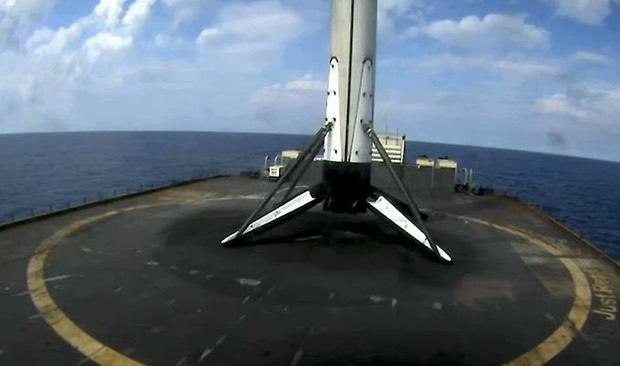A SpaceX Falcon 9 rocket carried the third in a powerful new generation of Global Positioning System navigation satellites into orbit Tuesday, the latest step in an ongoing program to boost performance and reliability for military and civilian users around the world.
The new GPS 3 satellites provide “the gold standard of position, navigation and timing with three times better accuracy and up to eight times improved anti-jam capabilities than its predecessor,” said Col. Edward Byrne, a senior manager in the Medium Earth Orbit program.
A Falcon 9 rocket making its first flight — SpaceX’s second carrying a GPS 3 satellite — blasted off from launch complex 40 at the Cape Canaveral Air Force Station at 4:10 p.m. EDT, shooting away through a partly cloudy sky on a northeasterly trajectory. Liftoff came 15 minutes behind schedule due to upper levels winds, but a final check showed conditions were “go” for launch and the rocket put on a spectacular afternoon show.
“This is our first U.S. Space Force launch, and we’re really excited about it and hope that this is the first of many, many of those launches in the future,” Lee Rosen, SpaceX vice president of customer operations and integration, told reporters last week.
Two-and-a-half minutes after liftoff, the first stage’s nine Merlin engines shut down and the stage fell away, flipping around to set up a landing attempt on a droneship stationed several hundred miles downrange in the Atlantic Ocean. The second stage, meanwhile, fired up its single engine to continue the climb to space.
During SpaceX’s first GPS 3 launch in December 2018, the California rocket builder made no attempt to recover the first stage based on the payload’s weight, trajectory and the propellant needed to reach the planned orbit.
But based on a detailed assessment of Falcon 9 performance across all SpaceX flights, mission managers gave the company the go-ahead to attempt recovery this time around, adjusting the satellite’s initial orbit in exchange for unspecified accommodations that saved taxpayers “several million dollars,” officials said.
And so, as has become routine for SpaceX, the first stage plunged back to Earth and settled to a pinpoint landing on the droneship “Just Read the Instructions.” The successful recovery marked SpaceX’s 55th overall, it’s 36th on a droneship.
The second stage engine shut down as planned a few seconds before the first stage landed. After coasting for 55 minutes, a second engine firing was planned to complete the climb to orbit. The GPS 3 satellite was expected to be released to fly on its own an hour and a half after launch.
The GPS constellation is made up of 31 active satellites positioned in six orbital planes at an altitude of about 12,550 miles. At least four satellites are above the horizon as viewed from any point on Earth, each one broadcasting its orbital location and timing data from ultra-precise atomic clocks.
Those signals are captured by GPS receivers in everything from jet fighter cockpits to smart phones and the family car, providing the data necessary to calculate the user’s position, altitude and velocity.
The latest-generation GPS 3 satellites feature a variety of upgrades, improving position accuracy, providing a stronger signal eight times less susceptible to jamming and boasting an increased 15-year lifetime.
The satellites also broadcast a signal compatible with other global navigation systems, allowing receivers to combine data from multiple constellations to maximize accuracy and availability to an estimated 4 billion users around the world.
“The Global Positioning System has become a part of our critical national infrastructure, from transportation to financial markets to energy grids, to the rideshare industry,” said Tonya Ladwig, vice president of the Navigation Systems Division with satellite-builder Lockheed Martin Space Systems.
“The U.S. economic benefit of GPS is estimated to be over $300 million dollars per year, and $1.4 trillion since inception. We believe that continued investment in GPS to upgrade technology and improve its capabilities is worth it.”



